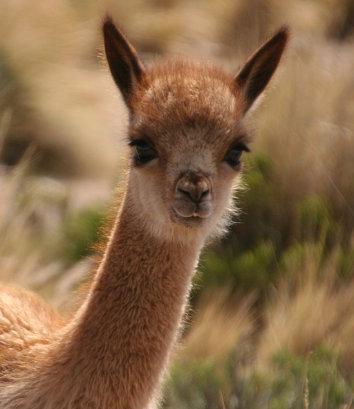Australian Alpaca Associa�on
What are alpacas? Alpacas are members of the family that includes the guanaco (‘hwan-ark-oh’), llama (‘ya-mah’ or ‘lar-mah’) and vicuna (‘vykoon-yah’). Collec�vely they are known as South American Camelids. Alpacas are thought to be a varia�on from original vicunas that lived more than 7,000 years ago. Alpacas originate from South America and were highly valued animals during the Incan civilisa�on from the 13th un�l the 16th century. They were an essen�al component in the provision of food and clothing (fleece and leather), and their manure was burnt as a source of fuel for hea�ng and cooking. During this �me, alpacas were found in various regions of South America and alpaca numbers approached 50 million. During the Spanish invasion in the 16th century, the majority of alpacas were slaughtered and almost ex�nguished. The remaining alpaca farmers retreated to the high mountain regions where the newly introduced ca�le and sheep could not survive. It was only their resilience and tolerance of harsh climates that saw their con�nued existence in the Andes. Their value was rediscovered and again u�lised during the 1800s. In the mid 1800s the entrepreneur Charles Ledger imported the first alpacas to Australia. The venture was not a success and the herd was dispersed and eventually died out. Alpacas were first imported into the United States of America and Canada in 1984, and then to Australia (for the second �me) and New Zealand in 1989. These countries offer milder climates and, most importantly, the opportunity to apply more advanced farming techniques and be�er management which have seen herd numbers prosper in a rela�vely short space of �me.
VICUNA
ALPACA
LLAMA
36










